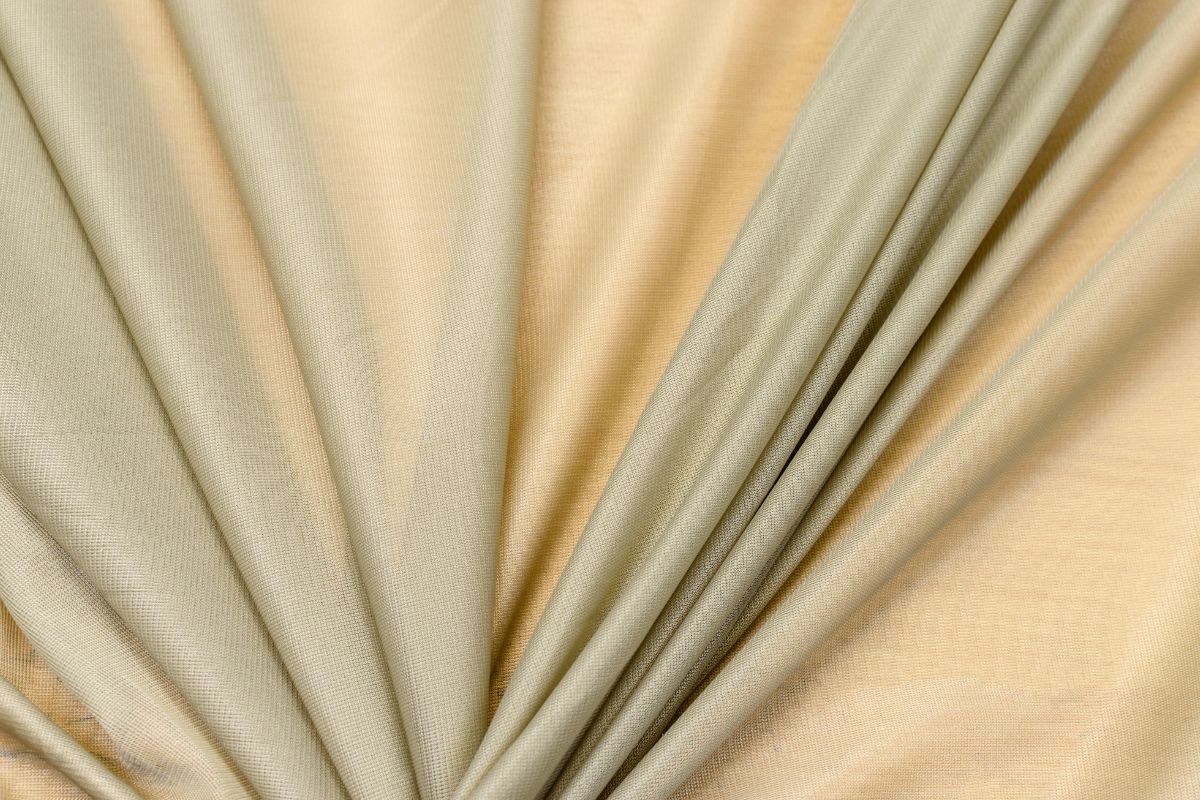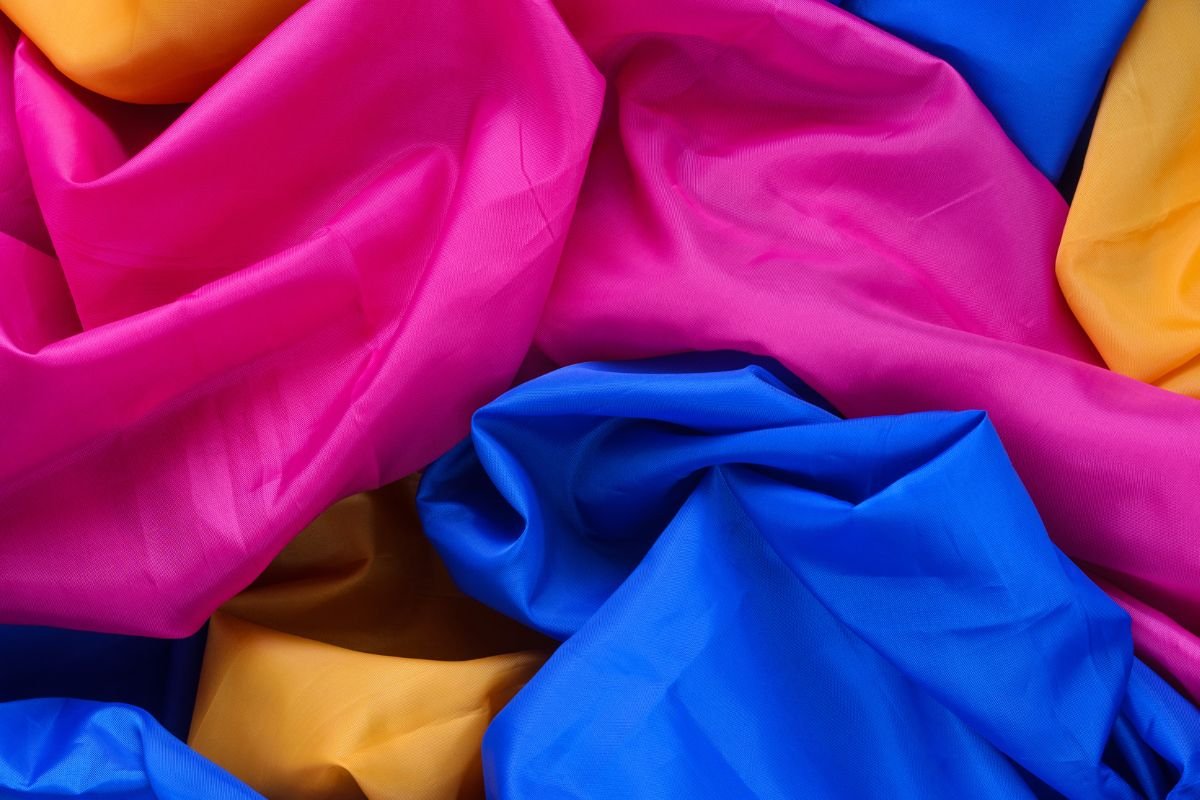If you own any clothes made from synthetic fibers, you may have some items that are made from polyamide. These fabrics are some of the most commonly used synthetic materials used to make clothing.

Most people haven’t heard of the name polyamide, though they may have heard of one of its more popular terms, nylon. The fabric is a strong and elastic material that is used to make swimwear, tights, and outerwear.
There are also other types of polyamides, like Kevlar and Nomex. Polyamides can resist light wear and tear well, but they can become damaged after exposure to heat, sun, and straining.
Polyamide fibers have been around for years. You’ll find out more about this versatile material in this post, including how it’s made and the different types of polyamide fabrics.
What Are Polyamide Materials?
The term polyamide might make you think of the fabric polyester. Like polyester, polyamide material can be synthetic and is thought to contain plastic. However, polyamide is not part of the polyester family. Polyamide is also known as the more popular term, nylon.
Polyamide isn’t always created with artificial substances. The term covers the molecular composition of the fibers, which can be organic and artificial. Natural fabrics like wool and silk are also called polyamides.
Examining the chemistry behind the name can help us understand why the polyamide term encompasses both organic and synthetic materials.
The most popular synthetic material is polyester, which makes many people believe that the term ‘poly’ refers to plastic. This isn’t the case.
Poly is taken from the term polymer. This is a material created from lengthy chains of comparable blocks attached together. These are connected by amides, which gives us the word poly-amide.
Polyamides can refer to natural fibers, but the organic ones aren’t called by their molecular name. They are better known as the fiber name silk or wool. Synthetic materials are different, as we refer to these by their chemical name.
We will be focusing on the synthetic form in this post.
Artificial polyamide materials are sourced from petroleum and have a lot of properties from synthetic fibers, both positive and negative. The materials aren’t breathable and can have the texture of plastic, feeling uncomfortable against the skin.
However, as they are so durable and strong, polyamide materials are popular choices for clothing and industrial purposes.
Kevlar, Nomex, and Nylon are all synthetic polyamide materials. Kevlar is used to create bulletproof vests. Nomex is the brand term for DuPont’s flame-resistant materials.
Nylon is well known for making parachutes in WW2, and remains a frequent fabric choice for several products, from umbrellas to tights.
Polyamide materials have differences that make them different from their nearest synthetic competitor, polyester. Polyester is water-resistant and fast-drying, but polyamides like nylon are slow-drying and absorbent.
This can make nylon warmer than polyester, though it can cling to a person’s frame and be more sweaty.
How Are Polyamide Materials Made?

The method used to create polyamide fabrics is lengthy but easy to follow.
The steps are as follows:
- The first phase involves removing diamine acid from crude oil.
- The diamine acid is blended with adipic acid to make a polymer, known as nylon salt.
- The nylon salt is placed under heat until it breaks down, creating a hot fluid.
- This liquid is passed through a spinneret, a device that replicates the spinning motion used by silkworms and spiders. As the liquid is forced through the holes, the centrifugal power turns the fluid into lengthy fibers.
- These fibers are positioned on a bobbin to prepare for the next few steps.
- The fibers are then placed under pressure to stretch them, making the fibers more flexible and elastic. These stretched fibers are then wound on spools which are sent to be turned into yarn.
- The polyamide fibers are then turned into threads which are then wound onto different spools. The yarn is ready to be woven into material.
- Some of the polyamide fibers will be woven into nylon, while others will be blended with different fabric fibers. This creates several different materials with various properties.
Different Types Of Polyamides
Two groups of polyamide fibers are used to create polyamide fabric. One of these types is organic polyamides, the other is synthetic polyamides.
Organic polyamide varieties are natural and are created differently compared to synthetic ones. Synthetic polyamides can be turned into various sub-groups.
Organic Polyamides
Silk and wool fibers are organic polyamides, but as they are natural, they aren’t referred to as polyamides. Instead, they are called proteins.
As mentioned above, polyamides are lengthy chains of blocks connected by amides. Some polyamides occur naturally, but these tend to be ignored.
Wool yarn is created by spinning wool fibers together. These threads can then be woven into wool material. Silk is also created in the same fashion.
Calling the material after the fiber’s name hides its molecular composition, but these are technically polyamides.
Aliphatic Polyamide
This sub-group concerns the nylon group, including PA11, PA12, PA66, AND PA6. Aliphatic polyamides are linear polymers, created from straight monomer chains. This type of polyamide is fully thermoplastic and synthetic.
Aliphatic polyamides are required when making commercial items and work very well when used for engineering plastics. PA66 and PA6 are both used often in industrial tasks, especially when taking on jobs that involve a lot of heat.
Other uses for aliphatic polyamides are upholstery, seatbelts, tire reserves, and carpets.
Aromatic Polyamide
These cost more than aliphatic polyamides, which is why they aren’t produced as much. One popular example of aromatic polyamides is Kevlar, used to make bullet-proof vests.
Also known as aramids, aromatic polyamides are heat-resistant and durable. They are mainly used for military or aviation applications, but they can also be used to reinforce boat hulls.
Polyphthalamide
These are semi-aromatic polyamides. They are used for tasks that involve long exposure to high temperatures and potent chemicals.
Examples include heat shields, fuel line connectors, and air coolers.
The Bottom Line
Polyamide materials are found in a variety of items and can show up when you least expect them.
Popular polyamides, like nylon, are used to make many everyday items, like tights and clothing. Others, like Kevlar, are very important as they create sturdy products, like bulletproof vests.
Polyamides are useful multipurpose materials, so they will remain part of our lives for the foreseeable future.
- 15 Amazing Vegan UGG Boots Not To Miss Out On - November 23, 2022
- 15 Vegan Running Shoes To Brighten Up Your Wardrobe - November 23, 2022
- 8 Best VEJA Vegan Sneakers To Buy Today - November 22, 2022










